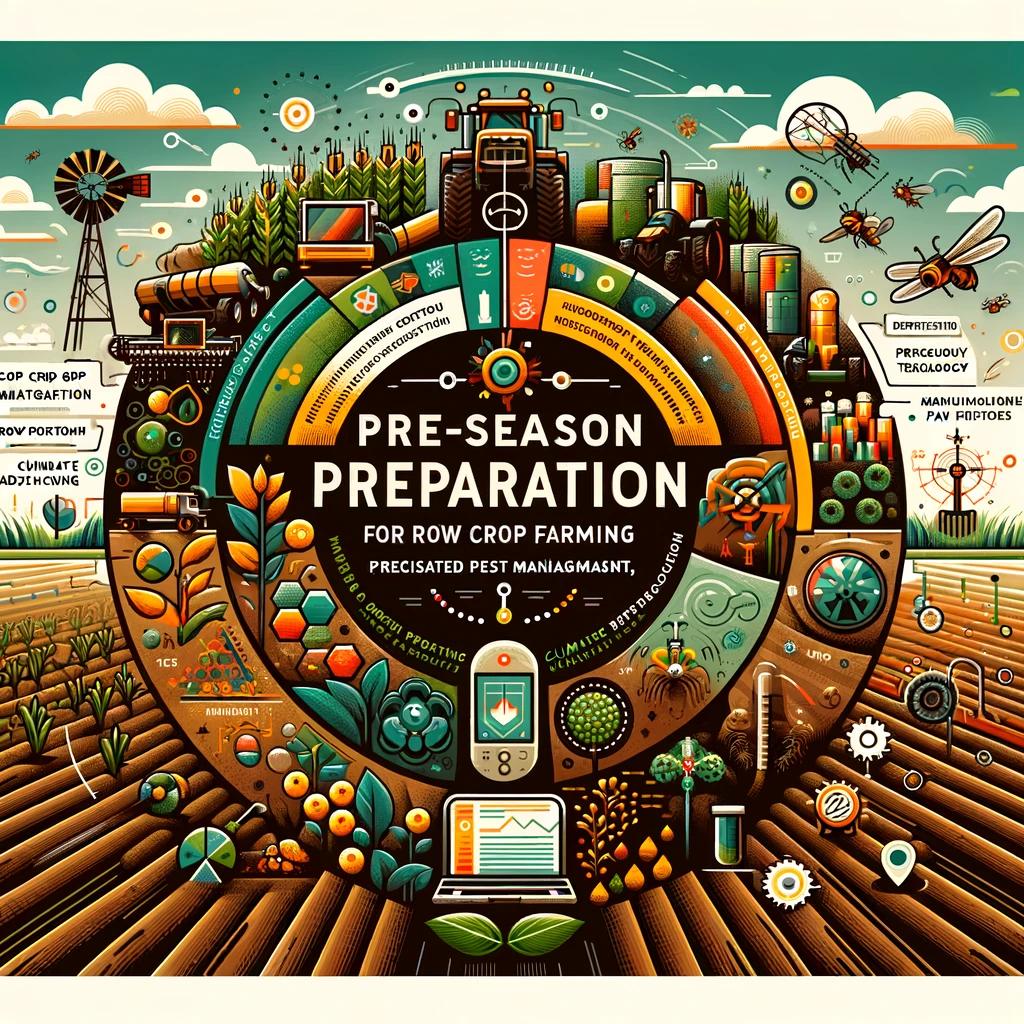
This guide focuses on the unique needs and challenges of row crop farming, emphasizing efficient use of resources, technology integration, and sustainable practices to enhance productivity and profitability.
1. Soil Testing and Field Preparation
Conduct Detailed Soil Tests: Test each field for pH, nutrient levels, and soil composition to guide precise fertilizer and lime applications. Soil sample analysis can be done by your local soil laboratory or extension service.
Field Preparation: Implement tillage practices suited to your soil type and crop needs. Minimum tillage can preserve soil structure and moisture, while conventional tillage may be necessary in certain conditions to prepare a seedbed, control weeds, or incorporate amendments.
2. Crop Selection and Rotation
Select Adapted Varieties: Choose crop varieties with high yield potential, disease resistance, and adaptability to your climate. Consider traits such as drought tolerance or herbicide resistance as applicable.
Implement Crop Rotation: Rotate crops to break pest and disease cycles, improve soil health, and optimize nutrient use. Plan rotations to include legumes to fix nitrogen, reducing the need for synthetic fertilizers.
3. Seed Treatment and Planting
Use Treated Seeds: Opt for seeds treated with fungicides and insecticides to protect against early-season pests and diseases. Consider seed treatments that enhance germination under cold or wet periods or seed varieties which tolerate drought or high-wind conditions.
Precision Planting: Use precision planting equipment to ensure uniform seed depth and spacing. Calibrate planters for specific seed sizes and adjust planting rates based on germination tests and field conditions.
4. Water Management
Irrigation Efficiency: For irrigated fields, optimize irrigation schedules and methods (pivot, drip, or furrow) based on soil moisture monitoring and crop water needs. Consider technology like soil moisture sensors and weather-based irrigation scheduling.
Drainage: Ensure proper field drainage to prevent waterlogging and enhance root development. Install or maintain drainage systems where necessary.
5. Integrated Pest Management (IPM)
Scouting and Monitoring: Regularly scout fields for pest and weed pressure. Use thresholds to make informed decisions about the need for interventions.
Chemical and Biological Controls: Use targeted chemical controls when necessary and consider biological controls like beneficial insects for sustainable pest management.
6. Machinery Maintenance and Calibration
Equipment Readiness: Ensure all planting, tillage, and spraying equipment is in good working order before the season starts. Perform necessary maintenance and repairs during the off-season.
Planter Calibration: Precisely calibrate planting equipment to match seed size, type, and desired planting rate. Check and adjust downforce, seed tubes, and closing wheels to ensure optimal seed placement. Perform a short test swath of planted seeds to ensure all settings are correct before planting entire fields.
7. Technology in Farming
Adopt Precision Agriculture: Utilize GPS-guided equipment for precise planting, fertilizing, and spraying. Consider variable rate technology (VRT) for applying inputs based on soil and yield data.
Data Management: Use farm management software to track field operations, input applications, and crop performance. Analyze data to make informed decisions for future seasons.
8. Weather and Climate Adaptation
Weather Tracking: Use weather forecasts and climate data to plan field operations and mitigate risks from extreme weather events.
Resilience Practices: Implement practices to increase crop resilience against climate variability, such as cover cropping, diversified cropping systems, and conservation tillage.
9. Economic Planning and Risk Management
Cost Analysis: Conduct detailed cost analyses for each crop, considering input costs, projected yields, and market trends.
Risk Management: Utilize crop insurance and marketing strategies (futures, options, contracts) to manage price and yield risks.
10. Professional Development and Networking
Continuous Learning: Stay updated on agronomic research, crop protection products, and new technologies through extension services, agricultural publications, and professional associations.
Collaboration: Engage with local farming groups, cooperatives, and research institutions for shared learning, market opportunities, and collaborative projects.












